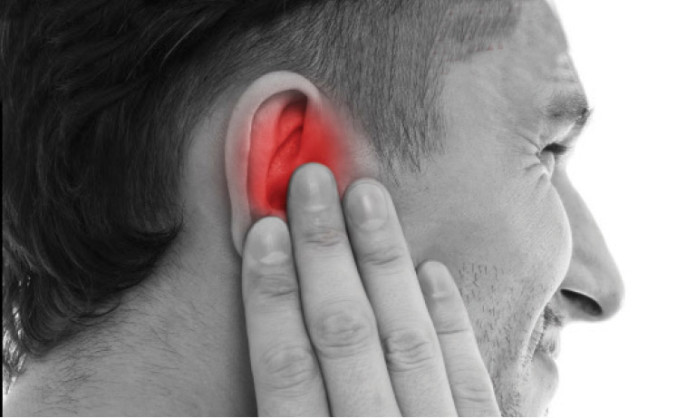An ear infection occurs when a bacterial or viral infection affects the middle ear – the sections of the ear just behind the eardrum.
Ear infections can be painful because of inflammation and fluid buildup in the middle ear.
Ear infections can be chronic or acute. Acute ear infections are painful but short in duration. Chronic ear infections do not clear up, or they recur many times. Chronic ear infections can cause permanent damage to the middle and inner ear.
Infection can affect the ear canal (otitis externa), the eardrum (myringitis), or the middle ear (otitis media).
Most ear injuries are caused by pressure changes during direct injury (such as a blow to the ear) or sport scuba diving, but a persistently painful ear may signal an infection that requires treatment.
Symptoms of ear infection include: ear pain, fullness in the ear, hearing loss, ringing in the ear, discharge from the ear, nausea, vomiting, and vertigo.
Symptoms may follow a respiratory infection such as the common cold.
Discharge from the ear canal is often caused by the infection known as swimmer’s ear (otitis externa). A painful ear with decreased hearing is often the result of otitis media.
What causes an ear infection?
Ear infections occur when one of your Eustachian tubes becomes swollen or blocked and fluid builds up in your middle ear. Eustachian tubes are small tubes that run from each ear directly to the back of the throat.
The causes of Eustachian tube blockage include: allergies, colds, sinus infections, excess mucus, tobacco smoking, infected or swollen adenoids (tissue near your tonsils that trap harmful bacteria and viruses).
Risk factors
Ear infections occur most commonly in young children because they have short and narrow Eustachian tubes. Infants who are bottle-fed also have a higher incidence of ear infections than their breastfed counterparts.
Other factors that increase the risk of developing an ear infection are: altitude changes, climate changes, exposure to cigarette smoke, pacifier use, recent illness or ear infection.
Diagnosis
The expert will examine your ears with an instrument called an otoscope that has a light and magnifying lens.
Examination may reveal:
• redness, air bubbles, or pus-like fluid inside the middle ear
• fluid draining from the middle ear
• a perforation in the eardrum
• a bulging or collapsed eardrum.
If your infection is advanced, a doctor may take a sample of the fluid inside the ear and test it to determine whether certain types of antibiotic resistant bacteria are present.
He or she may also order a computed tomography (CT) scan of your head to determine if the infection has spread beyond the middle ear.
Finally, you may need a hearing test, especially if you are suffering from chronic ear infections.
How is ear infection treated?
Most mild ear infections clear up without intervention.
Some of the following methods are effective in relieving the symptoms of a mild ear infection:
• applying a warm cloth to the affected ear
• taking over-the-counter pain medication such as ibuprofen or acetaminophen
• using over-the-counter or prescription ear drops to relieve pain
• taking over-the-counter decongestants such as pseudoephedrine.
If symptoms get worse or do not improve, the doctor may prescribe antibiotics. If a child under the age of two presents with ear infection symptoms, a doctor will likely give him or her antibiotics as well.
It is important to finish the entire course of antibiotics if they are prescribed.
Surgery may be an option if your ear infection is not eliminated with the usual medical treatments or if you have many ear infections over a short period of time.
Most often, tubes are placed in the ears to allow fluid to drain out. In cases that involve enlarged adenoids, surgical removal of the adenoids may be necessary.
Long term effect
Ear infections usually clear up without intervention, but they may recur.
The following rare but serious complications may follow an ear infection:
• hearing loss
• speech or language delay in children
• mastoiditis (an infection of the mastoid bone in the skull)
• meningitis (a bacterial infection of the membranes covering the brain and spinal cord)
• a ruptured ear drum.
Prevention
The following practices have been proven to reduce the risk of ear infection:
• washing your hands often
• avoiding overly crowded areas
• forgoing pacifiers with infants and small children
• breast-feeding infants
• avoiding secondhand smoke
• keeping immunisations up-to-date.
• Culled from www.healthline.com











